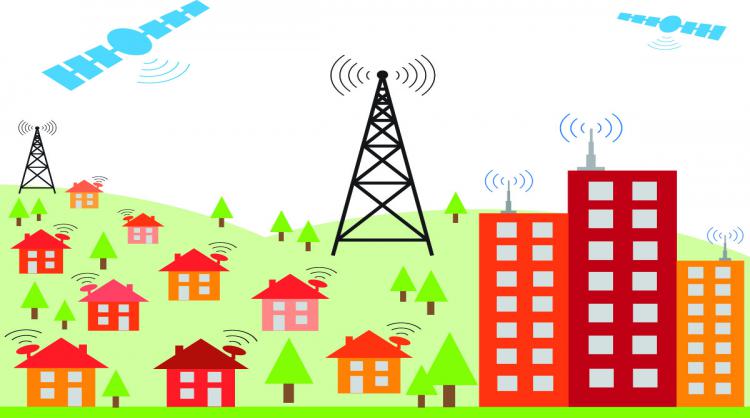FCC Once Again Addresses Rural Call Completion Problem
June 30, 2017 | by Andrew Regitsky

It's mid-2017 and yet Americans continue to have a problem completing long-distance phone calls to rural areas of the country. These problems can manifest themselves in various ways. As the FCC notes, “a call may be significantly delayed, the called party’s phone may never ring, or the caller may hear a false ring tone or busy signals.”
The Commission attempted to address the rural call completion problem in 2013 when it issued a Report and Order and Further Notice of Proposed Rulemaking in Docket 13-39. In that Order the Commission required call providers to record, retain, and report rural call completion data to provide it with the information it though it could use to mitigate this long-standing issue. The call providers included the long-distance voice service providers that make the initial long-distance call path choice for more than 100,000 domestic retail subscriber lines counting the total of all business and residential fixed subscriber lines and mobile phones and aggregated over all the providers’ affiliates. These carriers were called "covered providers". In most cases, they were the calling party’s long-distance provider. Covered providers included LECs, IXCs, CMRS providers, and VoIP service providers. These rules did not apply to intermediate providers for calls involving more than three carriers.
The approximately 55 covered providers were required to record and retain the following information for each long-distance call attempt to rural ILECs by Operating Carrier Number (OCN): calling party number; called party number; signaling code information; date; time of day; whether the call was handed off to an intermediate provider and, if so, which intermediate provider; whether the call was interstate; and whether the call attempt was answered. Covered providers began recording data on April 1, 2015.
These efforts resulted in a decline in rural call completion complaints to the FCC. But the agency notes that it continues to receive complaints from both consumers and rural carriers. Thus, in its upcoming July meeting the Commission is planning on adopting a Second Further Notice of Proposed Rulemaking. (Second FNPRM)
In the Second FNPRM, the Commission proposes to:
Adopt new rules that would, consistent with industry best practices, require covered providers to (1) monitor the rural call performance of their intermediate providers, and (2) hold those intermediate providers accountable for their performance.
There are several methods covered providers could choose to use to monitor intermediate providers. The Commission seems to prefer a method that,
for each intermediate provider with which it contracts as of the effective date of the rule, a covered provider must (1) monitor the intermediate provider’s performance in the completion of call attempts to rural incumbent LECs from subscriber lines for which the covered provider makes the initial long-distance call path choice; and (2) hold the intermediate provider accountable for such performance, including by removing an intermediate provider from a particular route after sustained inadequate performance. (FNPRM at p. 7).
The Commission’s goal is to define a meaningful, clear outcome for the covered providers collecting the data while minimizing their business disruptions. Therefore, the agency seeks industry comment on the necessity and value of a variety of possible implementation methodologies. The Commission asks the following questions:
Should we specify performance metrics or other factors that covered providers must meet and/or performance metrics they must use to monitor and assess the call completion performance of their intermediate providers or should we leave this to the discretion of covered providers?
Should we specify the form and frequency of the required monitoring, and if so how?
Should we, and if so how, clarify the scope of the required monitoring of intermediate providers? For example, if we were to adopt the specific formulation discussed above, should we clarify (1) whether it must be conducted on a rural OCN-by-OCN basis; (2) whether it must be conducted for all call attempts covered by our existing rules or whether sampling should be permitted; (3) whether it should include call attempts to not only rural incumbent LECs but also rural competitive LECs; and (4) whether it should also include call attempts to nonrural incumbent LECs in the aggregate?
Should we tie the performance monitoring requirement to industry best practices, and if so which best practices?
We seek comment on whether and how we should clarify the circumstances in which a covered provider must hold one of its intermediate providers accountable for its rural call completion performance. For example, if we adopted the specific formulation discussed above, how should we define what constitutes “sustained inadequate performance” by an intermediate provider? (Id. at 7-8).
The Commission believes that these new requirements for covered providers would more directly address rural call completion issues than the existing system. At the same time, it would implement the new rules it would simultaneously eliminate the existing 2013 rural call completion data collection and reporting rules which it believes have been burdensome and have not fully addressed the problem.
Frankly, the one truly effective way the Commission could eliminate the rural call completion problem would be to move all interstate and intrastate access rates to bill-and-keep. If some carriers perceive there is money to be made by taking advantage of the arbitrage that continues to exist in inter-carrier compensation, rural call completion shenanigans will continue. Absent bill-and-keep, the Commission will always be forced to rely on data reported by carriers to identify offending companies, a partial solution that will never completely solve the problem.

